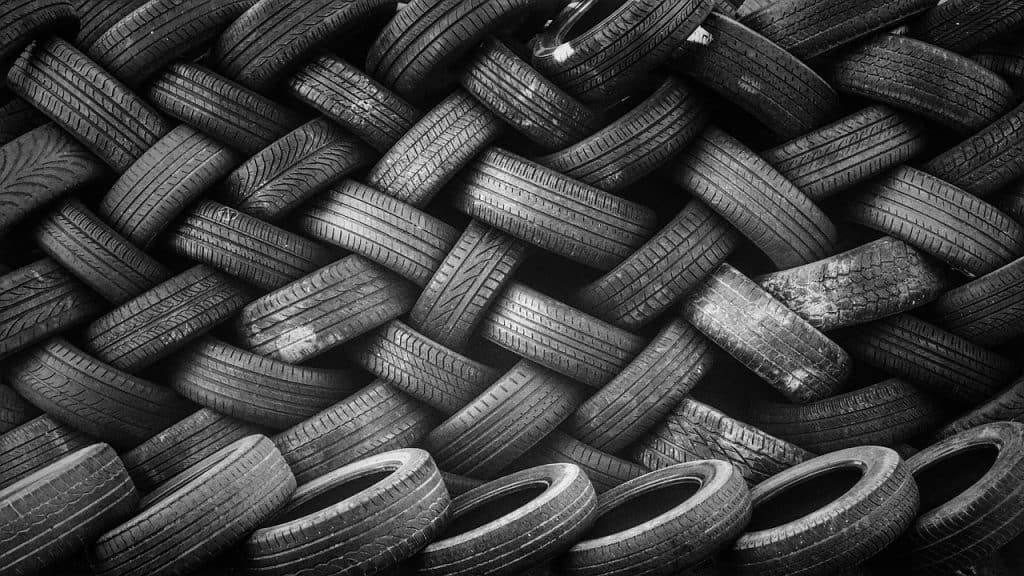Tyres help to keep a car journey safe and comfortable, working in conjunction with the vehicle’s suspension. Crucially, they are the only contact with the road. That’s why it is safe to say that when tyres are purchased, owners should always buy the best they can afford.
Rubber, and also artificial rubber of course, remains an important component of a tyre’s construction despite the march of technology over nearly two hundred years of development; so why are tyres made of rubber?
Good load carrying properties

The keyword is here to describe rubber tyres is visco-elasticity. Essentially this means that a car tyre is a robust, supple product in that it can deform yet still return to its original shape.
That is why rubber remains so popular for everything from a child’s toy to the suspension and tyres we use on our cars.
A long comfortable life
The rubber used in car tyres is not in its pure form. As such it would wear too quickly and not be financially viable.
That’s why the invention of the vulcanisation process which hardens the rubber, enhancing it’s strength and making it last much longer, was the key factor in forming the beginnings of the tyre industry.
Other materials used in tyre composition help to keep the tyre flexible while in use, retaining the tight seal with the wheel rim.
Grip in all conditions
There would be no point in constructing a car tyre that cannot be used all the time. The crucial benefit of rubber hoops is that they can take the punishment dished out by our roads, remaining effective in all weathers.
No other product, man-made or otherwise, has proved as viable for the production of tyres. This is a material that can hold and maintain grip on all types of surfaces and in all conditions.
Why are tyres made of rubber and not iron?
So why don’t we have iron wheels on our cars? Few substances are stronger and harder and iron wheels have appeared throughout history, on old gun carriages say, and still do today on those steam traction engines we see at fairgrounds. Trains run on iron wheels and so on; so why not cars?
Well, it’s a matter of weight, wear and tear. Working alone, a vehicle’s suspension would not be enough to cushion the iron-hard ride on our often poor quality roads.
Further, they would add a substantial amount of weight to the car and this in turn would have the knock-on effect of using considerably more fuel. After all, car makers strive to reduce the moving weight of a car to aid economy and reduce emissions; rubber tyre construction helps with that.
Remember, trains run on smooth tracks which are designed to handle the considerable weight and heat generated. The carriages are independently suspended to aid passenger comfort. In short, nothing beats rubber for doing the automotive job.
What is rubber made from?
Rubber in its purest, most basic form is an entirely natural product. It is made by extracting the naturally-occurring sap, called latex, which is extracted from a variety of trees, although one tree in particular, known simply as the Rubber tree, is responsible for most of the production.

The sap is drawn from cuts in the bark and begins the process of being solidified to eventually become the manufactured product as we know it.
As with any natural resource, there is a concern that it could run out. That’s why synthetic rubber was produced in the laboratory and forms a proportion of the material used in tyres.
That said, the value of rubber has long been known and plantations have been grown to ensure continuity of supply without detracting from nature.
What other materials are tyres made of?
The modern car tyre has a complex construction and many different materials go into the build. In fact, more synthetic rubber is used, particularly with the tread, than the natural variety.
In addition steel finds its way into the construction in the form of belts that run through the tyre to add strength. This is especially valuable in the sidewall and bead (that’s the part that grips the wheel rim when inflated).
Further, textile layers, called plies, are added. These are made of rubberised synthetics like rayon or polyester and are included to help retain air pressure and maintain tyre shape.
Properties of rubber
The reason rubber has lasted so long as the primary material for tyre manufacture is because of its considerable attributes for the job, and why synthetic rubber mimics it. These useful properties include:
- Tensile strength
That innate ‘stretchiness’ that allows the product to deform and then return to the original shape.
- Tear resistance
The ability to take minor cuts or damage without failing or puncturing.
- Abrasion resistance
As they rotate, car tyres are continuously in contact with the road, the rough surfaces of which continually abrade the tyres. The ability to resist abrasion, especially when cornering say, is why rubber is ideal for the job.
- Resilience
This is the ability of rubber to return to its original shape even after being squashed or elongated. Perfect for load-carrying.
Summary – Why rubber is right material for a tyre
Experimentation and experience has shown that there is just no substitute for rubber. Its many useful properties make it perhaps one of the most versatile products with literally hundreds of uses.
That versatility is why rubber in our space-age world continues to help keep us safe on our increasingly busy roads. So when visiting your local tyre centre, remember how much has gone into the research and development to make tyres as safe as possible and it all starts with a tree.
